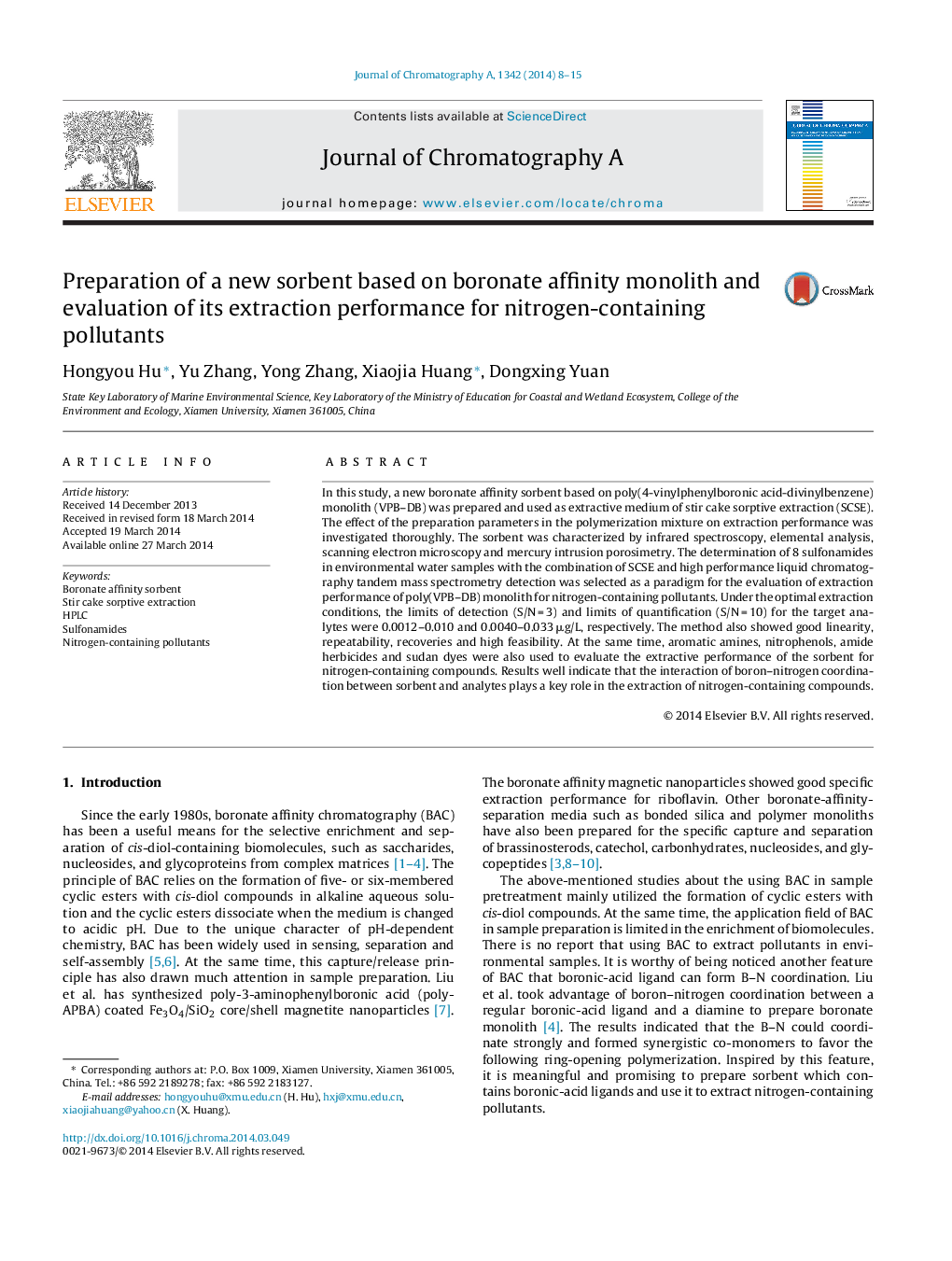| Article ID | Journal | Published Year | Pages | File Type |
|---|---|---|---|---|
| 1203214 | Journal of Chromatography A | 2014 | 8 Pages |
•A new boronate affinity sorbent (BAS) was prepared.•The BAS was used as the extractive medium of stir cake sorptive extraction (SCSE).•The B–N coordination favored the extraction of nitrogen-containing pollutants.•A combination of SCSE–BAS–HPLC/MS/MS was developed.•The combination was applied to monitor ultra-trace sulfonamides in water samples.
In this study, a new boronate affinity sorbent based on poly(4-vinylphenylboronic acid-divinylbenzene) monolith (VPB–DB) was prepared and used as extractive medium of stir cake sorptive extraction (SCSE). The effect of the preparation parameters in the polymerization mixture on extraction performance was investigated thoroughly. The sorbent was characterized by infrared spectroscopy, elemental analysis, scanning electron microscopy and mercury intrusion porosimetry. The determination of 8 sulfonamides in environmental water samples with the combination of SCSE and high performance liquid chromatography tandem mass spectrometry detection was selected as a paradigm for the evaluation of extraction performance of poly(VPB–DB) monolith for nitrogen-containing pollutants. Under the optimal extraction conditions, the limits of detection (S/N = 3) and limits of quantification (S/N = 10) for the target analytes were 0.0012–0.010 and 0.0040–0.033 μg/L, respectively. The method also showed good linearity, repeatability, recoveries and high feasibility. At the same time, aromatic amines, nitrophenols, amide herbicides and sudan dyes were also used to evaluate the extractive performance of the sorbent for nitrogen-containing compounds. Results well indicate that the interaction of boron–nitrogen coordination between sorbent and analytes plays a key role in the extraction of nitrogen-containing compounds.
